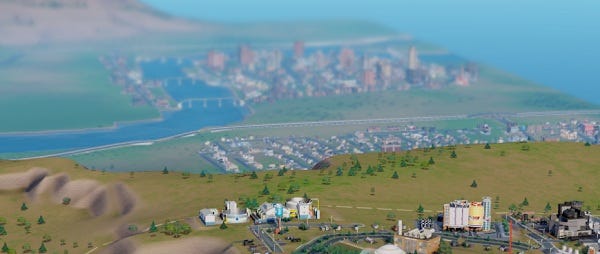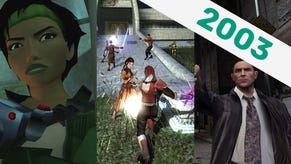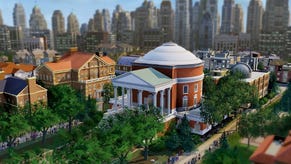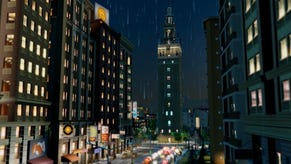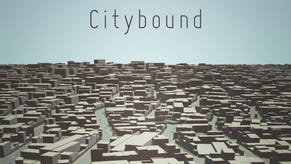Wot I Think: SimCity
Road Squalor
We've had quite a lot to say about SimCity but I haven't told you wot I think yet. I posted my initial impressions two weeks ago, feeling like I'd only just scratched the surface. I've been scratching away since then, off and on, and now I'm ready to tell you what lies beneath.
The conversation, cozening and confusion that flared up following SimCity’s unhappy launch threatened to drown out discussion of the game that resided somewhere in the hinterland between a distant server and PCs across the land. The internet loves a narrative and the one that was forming pre-launch and in the first week or two after release suggested that the hero of this particular tale was a noble and complex city simulator; the villain was social gaming, always-online, DRM and enforced multiplayer.
I’m not going to spend a great deal of time talking about the villainy here because I’d be repeating what others have said already and it's not the focus of this particular word-load. My take on the server issues boils down to a deep, exasperated sigh when they fail to work and, after playing for this long, a slightly shallower sigh when they do allow me to enter. SimCity, as the reconstructed narrative has mostly taken into account, is no hero trapped inside a digital dungeon. It’s a minor trifle, a troubled toy that, like so many childhood Christmas presents, is most enjoyable as it's being unwrapped.
Zones and roads, that’s what you’ll need to mayor your way to the top. Zones, as ever in the simulated cities of Maxis-land, can be industrial, commercial or residential. I’ve experimented with all kinds of patterns, including a radical industrial-residential core with a commercial district at the other side of the map, literally surrounded by shit and garbage. That city, like the rest, filled up. Residential demand was high, the basic services were in place and, after five or six hours, profits were high.
Two weeks ago, I wrote this: “It’s lovely to see a world grow and to nudge it in a new direction occasionally”. I stand by that. The first time you fill a map, the city, with its various tiny districts and carefully laid out streets, is your creation, a model of efficiency, fizzing with personality. It only takes a few hours and then you can either wait for your bank account to fill up and buy an expo centre, or something else fancy, or drop parks everywhere and watch happy faces exploding into the polluted air above the sims’ houses. The miniscule size of the areas means you’ll never be able to have everything you want – building that expo centre will mean knocking down some houses, factories or shops - because every inch of flat ground is taken up quickly, and anything that isn’t flat is only good for roads.
Speaking of which, as Doc Brown might say, ‘where we’re going we’re going to need a fuckload of roads’. They transport everything, from shit to shoppers, and while it’s a neat solution for a simplified network of connections, it causes oddities. In one of my towns, the power station is placed as far from residential areas as possible and since it cannot be connected by power lines, because they don’t exist, electricity is carried down a dirt road instead. When the city became overcrowded, with every road except the one to the power station upgraded to maximum density, I was initially baffled by the traffic jams that held up fire engines and ambulances, causing the death toll to rise and the population to become slightly less ecstatic. I built a couple of skate parks to compensate for the unnecessary fatalities and people immediately stopped complaining. Parks are soma and, as long as there’s a swingset nearby, a wife won’t mourn her dead husband or be pissed off that he was on fire for sixteen hours before help arrived.
I wanted to understand the problem because it was annoying from an aesthetic and logistical point of view, even if it didn’t actually make much of a difference to the prosperity and happiness of my surviving sims. It was the dirt road. Even though I’d only intended it to lead to the power station, I’d zoned industrial areas along its length because space is very much at a premium and I couldn’t afford to waste the land - people need jobs, after all, or so I thought at the time. Everything went down that road. Fire engines, cop cars, commuters, ambulances – the entire population of the city drove up to the station and back down again, honking and grinding their gears in the heavy traffic – they couldn’t pass it without deciding to take a detour.
When a simulation unexpectedly lobs a spanner toward my works, I’m usually overjoyed. Systems pushed to their limits are one of life’s joys, whether it’s physics modelling causing bizarre gyrations or a dwarf dooming a fortress by opening the wrong door at the wrong time because he fancies a brew. Suddenly, elephants. SimCity does throw disasters at the player but they are Malthusian natural checks rather than entertainments or actual calamities. Each ‘city’ is just about finished after five or six hours of play – the map is full and all of the pieces are in place. A natural, supernatural or entirely unnatural disaster is the slightly more spectacular equivalent of somebody removing a few pieces from a completed jigsaw so that it can be completed again.
The real disasters are the confused vehicles and people, driven by path-finding and urges that make me long for the abstracted models of old. I love the idea of a city that is driven by moving parts, a machine rather than mathematics, but SimCity is not that game. Once a map has been filled, the next is much the same and the small areas and repetitive structure make for an experience that allows little space for interesting design and instead becomes a slog of zoning and linking. The moment that I realised my input was barely essential, beyond the initial setup, SimCity became a colourful, cartoon screensaver. A colourful, cartoon screensaver that required a constant internet connection.
Most of my time has been spent developing single player regions, which is a perfectly viable strategy, but I’ve also dabbled in a spot of neighbourly sharing. The social aspects of the game – and social is the right word; other people have a mostly numerical presence but aren’t actually present – don’t contribute anything of great significance and certainly nothing to counterbalance the more fundamental problems. These cities are constructed on shale and sham, spouting resources to power yet more inconstant constructions.
Two weeks after writing my initial impressions, I’ve had my fill. If EA do shut the SimCity servers down in a couple of years, removing the game from existence, I can’t imagine that millions of voices would cry out right before the SimSilence. I know people who are enjoying the game, imposing their own rules and restrictions, or simply satisfying themselves with different experimental shapes and styles. Even though I’ll never be one of those toybox tinkerers, it’s worth repeating that they should be able to enjoy the game whenever and wherever they are.
Whenever I load the game up, I'm tempted to start with a fresh plot, spurred on by the pleasure of playing with the simple zoning and road-building tools. Everything sounds just right and the interface is clean, bright and a joy to use. It only takes a few minutes for the sinking feeling to settle in my stomach though. I'm going to end up doing the same things as I've done before, producing money and resources to feed my hungry neighbours, specialising just a little but never a lot, growing tired before the mini-metropolis is complete. The initial excitement as my first skyscrapers grew feels like a memory from an age of innocence and it's one that I'd gladly revisit if I could. I'd need soma of my own to do that though.
SimCity is a charming object but has more in common with a model railway set than a city building simulation. The GlassBox engine, so attractive in theory, is unconvincing in practice, incapable of making me believe that even these small neighbourhoods are functioning, living spaces. For a while, I enjoyed watching new buildings sprout out of the ground like flowers in a time-lapse video, but I've come to the conclusion that SimCity is showing me a lot, telling me very little and barely listening at all.
SimCity is available now.
